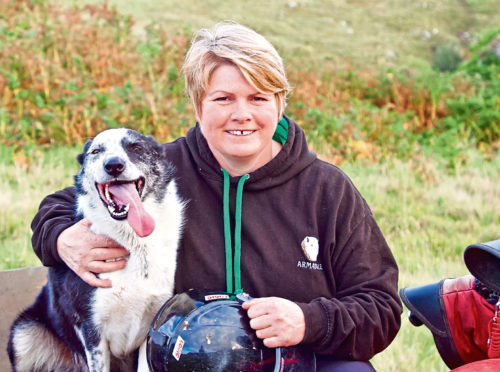The New Year bells were still ringing in my ears when my nephew announced we should climb Naver Rock.
There’s a beautiful broch at the top overlooking Naver Bay, which was well worth the climb to blow away the festive cobwebs.
Of course, I had my phone out for the obligatory picture for social media and went to use one of my favourite touristy tags #VentureNorth, and there in the predictatext as the day’s hashtag trending on Twitter was #Veganuary!
I was taken straight back to reality and the uphill struggle our livestock industry faces on many fronts.
The current anti-meat agenda of the media and television is hard to miss.
It’s everywhere you turn and this week’s offering on Channel 4 of Apocalypse Cow: How Meat Killed the Planet, from George Monbiot, is another smack in the face for the industry.
Of course, we are fighting back with the correction of misinformation and the positive benefits of livestock production in temperate, grass-growing countries such as Scotland.
Still, it feels we are continually on the back foot, no matter how many nutritionists come with the facts that eating meat as part of a healthy, well-balanced diet is great for our iron, B12 and vitamin D levels compared to plant-based diets.
The Highland Cattle of Ardbhan, aired last week on BBC Alba, was one of the best programmes I’ve watched in a very long time.
It made me laugh, cry and reflect on what we do as farmers and crofters, and goes to show what a small TV channel can do on a shoestring budget.
It was also a shining example of the positive impact livestock can have on the environment, biodiversity, rural economies and communities.
It epitomises low-impact beef production with a high environmental payback to the land and the wildlife.
This was clearly demonstrated on the return of cattle to the island of Vallay, which was quickly followed by the welcome sight of endangered corncrakes to the improved habitats created through grazing livestock.
Would it not be fantastic to have the brilliant, hardworking MacDonald family, with their fold of naturally-reared Highland cattle from North Uist, broadcast to the viewing public across the UK?
What an opportunity to dispel the negativity and myths which are currently surrounding agriculture and livestock production.
As an industry, we’re great at speaking to each other but all lines of communication need to be directed to the consumers of the food we grow and produce right now.
Without preaching and being pious, we need to tell the story of seasonality, sustainability, traceability, biodiversity and the positive impact farming and crofting can have on the environment and the rural communities we live and work within.
On a personal level, I would love to see how the famous George Monbiot would fare if he was put into a room with 79-year-old Ena Macdonald, founder of the Ardbhan fold of Highland cattle.
I suspect the wise lady of the land would be too much for the man from the south.










